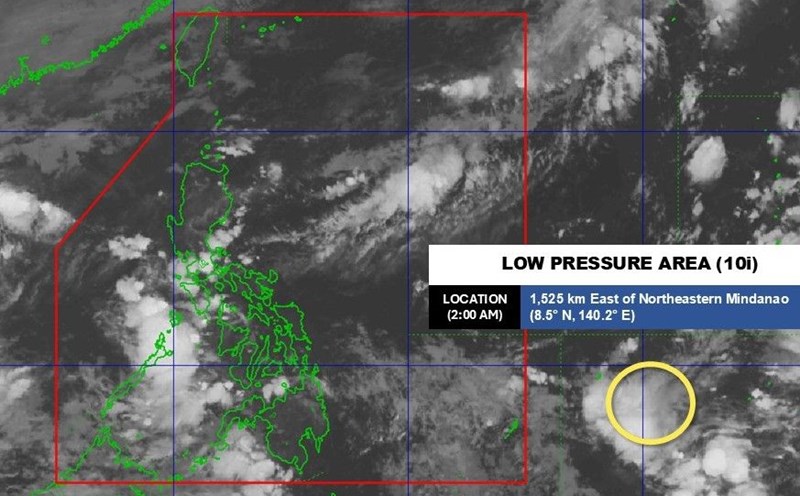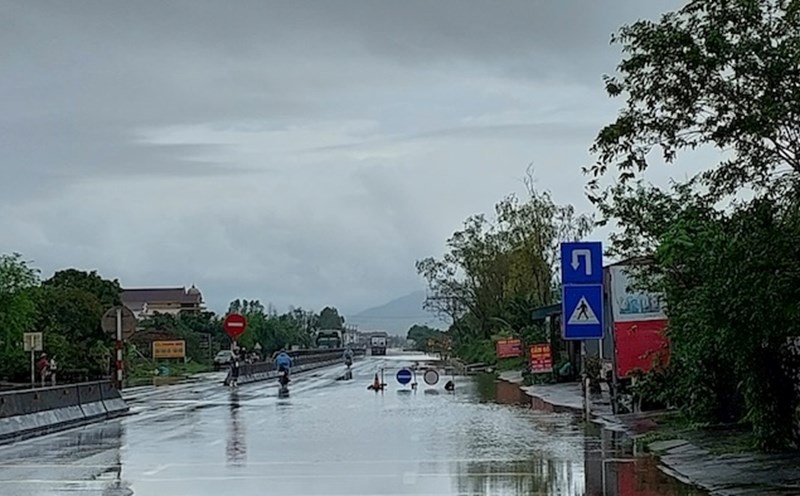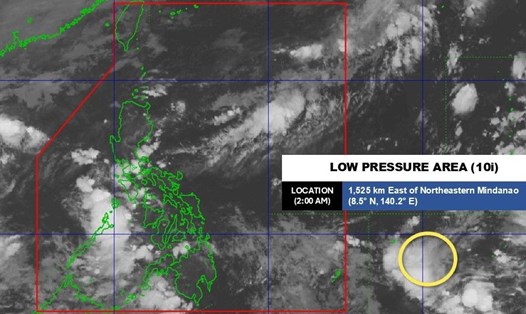The latest storm forecast from the Philippine Atmospheric, Geophysical and Astronomical Services Administration said that during the week from October 30 to November 5, there will be 3 low pressure areas around the Philippines.
Low pressure 1 will form in the Sulu Sea, near the East Sea, with the possibility of strengthening into a storm.
Low pressure 2 has appeared outside the Philippine Forecast Area (PAR), southeast of Mindanao. This low pressure is forecast to have a high chance of strengthening into a storm around November 2 or 3 and will be locally named storm Tino - the 20th storm to make landfall in the Philippines this year.
According to PAGASA, there are two scenarios for this potential storm. One is to move slowly northwest over the Philippine Sea and could make landfall in Northern Luzon by the end of next week.
The second is moving west-northwest and could make landfall in Eastern Visayas around November 4.
Low pressure 3 is also expected to appear far east of the Philippines before November 5.
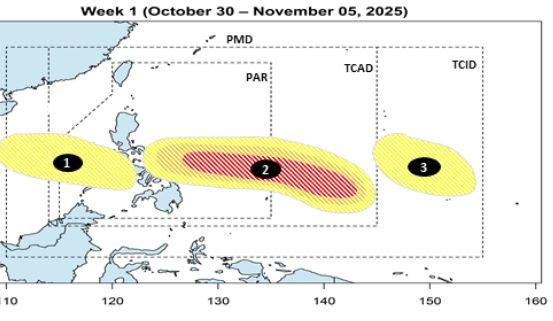
By the week of November 6-12, potential typhoon Tino is forecast to pass through Visayas - Southern Luzon and enter the East Sea. Low pressure 3 is expected to enter PAR, heading north of Luzon, with a moderate chance of strengthening into a storm.
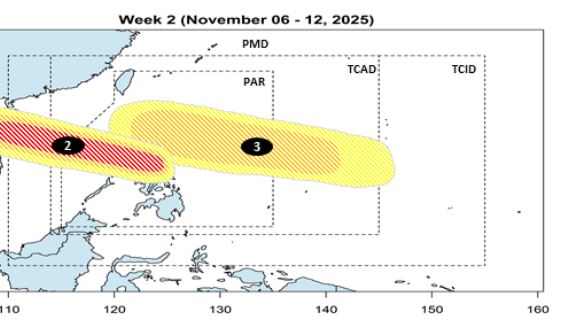
Meanwhile, according to the US National Oceanic and Atmospheric Administration (NOAA)'s Climate Prediction Center (CPC), the Madden-Julian fluctuations (MJO) will strengthen strongly in the second half of October and are combining with La Nina, creating an unprecedented convection zone since August, covering the East Sea and Southeast Asia.
The CPC also warned of the possibility of a new storm appearing east of the Philippines in early November, along with the risk of heavy rain exceeding the standards in many tropical areas, from the western Pacific to the Caribbean.
GEFS and ECENS forecast models show that MJO may weaken in the second week of November. However, even if weakened, the MJO is still strong enough to impact rainfall and the likelihood of global tropical storm formation in the first half of November.
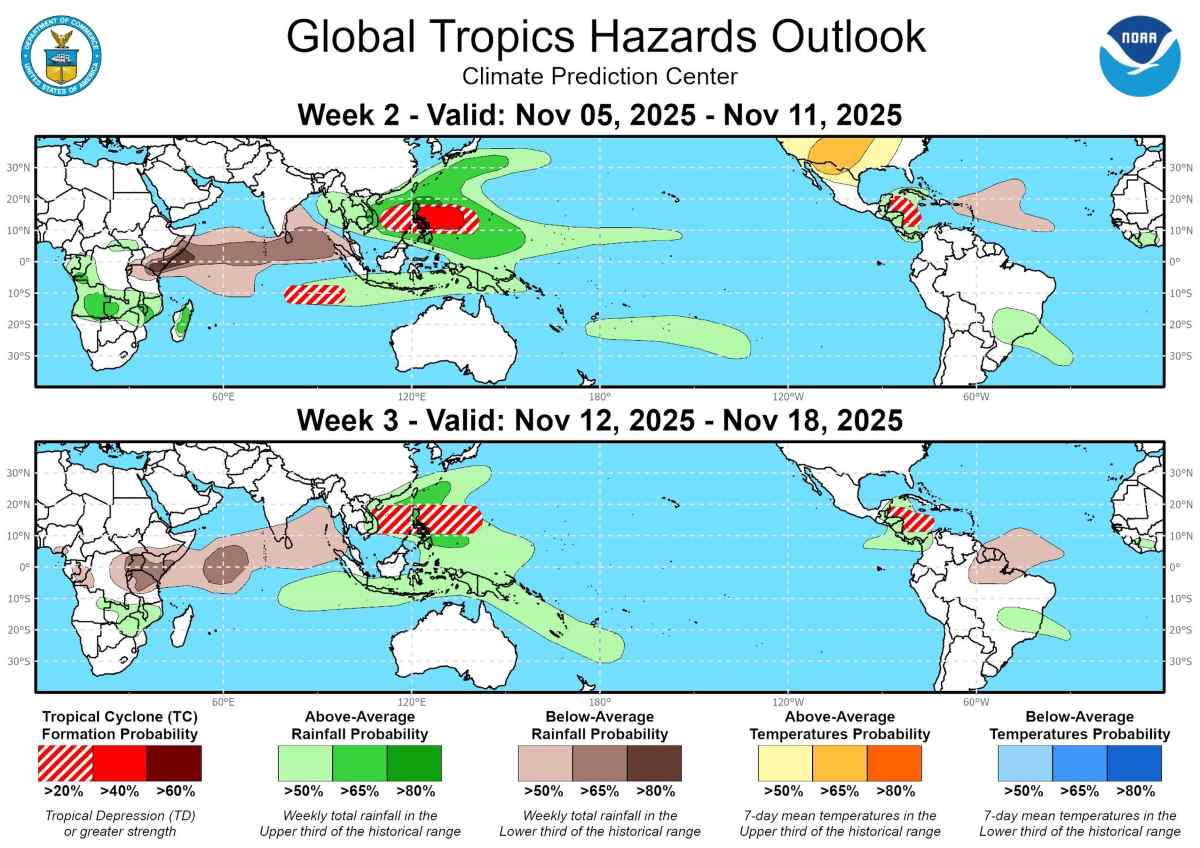
According to the global climate model, the probability of storm formation in the western Pacific will reach over 40% in the period from November 5-19. Scenario with multiple models: A tropical storm will form east of the Philippines early or just before the second week of November, then move across Luzon Island or the central Philippines.
At the same time, the southeastern Indian Ocean also has a 20-40% chance of developing a typhoon.
By the week of November 12-18, the probability of storms in the East Sea and the western Pacific is forecast to be 20-40%.
Based on the GEFS, CFS and ECMWF model combinations, and the influence of MJO and La Nina, areas with the potential for above-average heavy rain in the first two weeks of November include: Southeast Asia, especially Indonesia, Malaysia, the Philippines and Vietnam; the western and southern Pacific; Central America and the Caribbean (especially Jamaica and Cuba). In contrast, the African hormone region and much of the Indian Ocean will see less than normal rain.

